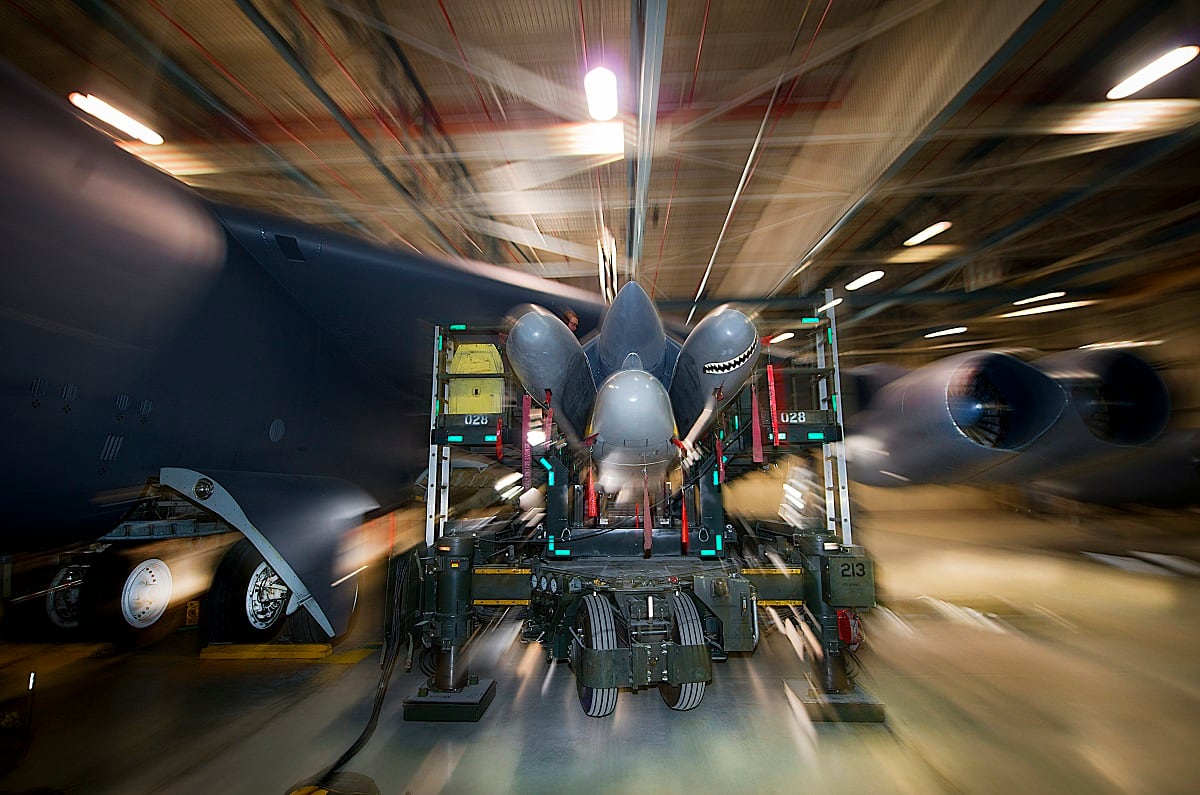The main novelty of the recent U.S. Nuclear Posture Review is the emphasis on small nuclear weapons. That is exactly the opposite of President Donald Trump’s trademark: always being and having the biggest.
The White House has not written the Nuclear Posture Review. As usual, the Nuclear Posture Review is an interagency document that has passed many bureaucratic levels in both the departments of Defense and Energy (and to a lesser extent the State Department). Of all presidents since Bill Clinton, only Barack Obama succeeded in blocking proposals coming out of his administration and shaping nuclear declaratory policy to a limited extent ― thanks to his personal interest and courage.
The president has a unique role when it comes to the moment that deterrence has failed and these weapons are supposed to be used. However, in preparing the list of (target) options, the presidential influence is marginal or nonexistent, as Janne Nolan and more recently Daniel Ellsberg have described.
U.S. nuclear weapons policy ― and that applies also to other nuclear possessor states ― is made by lower-level defense officials (both civilians and the military) and nuclear scientists, called the “nuclear priesthood.” Of course, these nuclear priests believe to a large extent in what they preach, namely nuclear deterrence.
And it is not difficult to come up with countries that need to be deterred. This time it is Russia, China, North Korea and Iran.
RELATED

But much more important than deterrence ideology (or theology, as it is basically a belief) ― and this is mostly not mentioned ― are the parochial interests involved: a gigantic bureaucratic complex left over from the Cold War that includes thousands of nuclear scientists in the Los Alamos National Lab, Lawrence Livermore National Laboratory and Sandia National Laboratories that on a permanent basis try to stay busy in developing, maintaining and building nuclear weapons.
Weapons = money = jobs. And of course prestige.
Developing and building new weapon systems ― like this time an air-launched cruise missile and a sea-launched cruise missile ― yields more money than maintaining existing weapon systems.
The same applies for the Pentagon: U.S. Strategic Command is eager to plug in the new nuclear weapons developed by the Department of Energy into “new” military missions.
However, most happy are the defense firms that may build the toys. General Dynamics, for instance is estimated to receive $130-270 billion for the construction of the new Columbia-class nuclear submarines. That is a lot of money that will make many people, including politicians, smile.
Knowing this complex very well, former USSTRATCOM chief Gen. Lee Butler, who was in charge of the entire U.S. nuclear weapons arsenal at the end of the 1980s and the beginning of the 1990s, characterized it as follows: “gargantuan agencies with mammoth appetites and a sense of infallibility that consume infinite resources in pursuit of a messianic vision of a demonization.”
If you want an explanation for both the irrational buildup of the U.S. nuclear weapons arsenal during the Cold War and the relative standstill ― or inertia, as I once called it ― in the build-down of the U.S. nuclear arsenal after the Cold War, especially since the mid-1990s, this is it.
As the ghostwriters of the current and previous Nuclear Posture Reviews ― Keith Payne, Brad Roberts, Frank Miller and John Harvey ― stated: “The 2018 NPR reflects much more continuity than change.’ Of course, more of the same is exactly what the nuclear priesthood wants.
The huge modernization plans had indeed already been announced by the Obama administration as a compromise for the (limited) reductions under the nuclear arms reduction treaty New START. Even Obama’s declaratory policy is basically maintained, except that the Trump administration also wants to deter enemies to attack critical infrastructure and cyberattacks. The Trump administration’s Nuclear Posture Review neither proposes to leave the Intermediate-Range Nuclear Forces Treaty nor halt the testing moratorium. It did not propose a quantitative expansion of the nuclear arsenal either. Very un-Trump.
The so-called main novelty is the introduction of low-yield nuclear weapons. Smaller nuclear weapons, however, are not novel at all. There are already 1,000 nuclear weapons in the U.S. arsenal that can be categorized as low-yield, and these kinds of weapons have always existed.
RELATED

Also new is the announcement to start building submarine-launched cruise missiles again. The last ones were just eliminated by the Obama administration. It is symbolic for how the system works. Building. Eliminating. Building them again. Eliminating. Building them again in another format or color. It never ends.
Allies, however, should make up their mind: Do they want to be (mis)used for U.S. domestic bureaucratic reasons, as it is abundantly clear that if the U.S. did not have to defend its allies, the nuclear priesthood would need much less U.S. nuclear weapon systems?
In other words, is it in the economic and strategic interest of allies to satisfy parochial needs for the nuclear military-industrial complex in the United States? America first, as Trump likes it — or not?
Tom Sauer is an associate professor of international politics at Universiteit Antwerpen in Belgium. He is a former BCSIA fellow at Harvard University, and he is the author of ”Nuclear Inertia: US Nuclear Weapons Policy After the Cold War,” which focuses on the Clinton administration’s Nuclear Posture Review.








